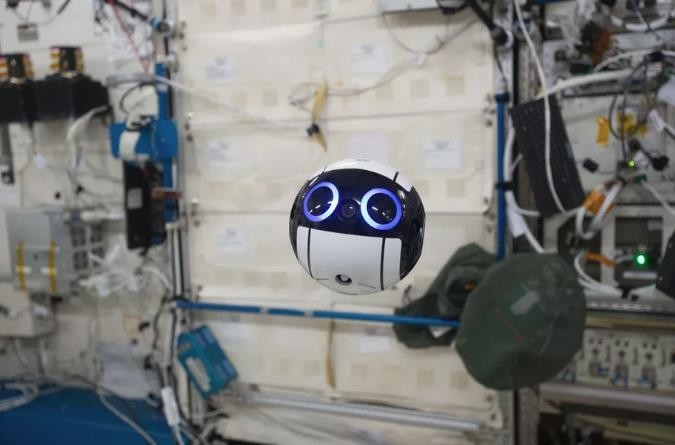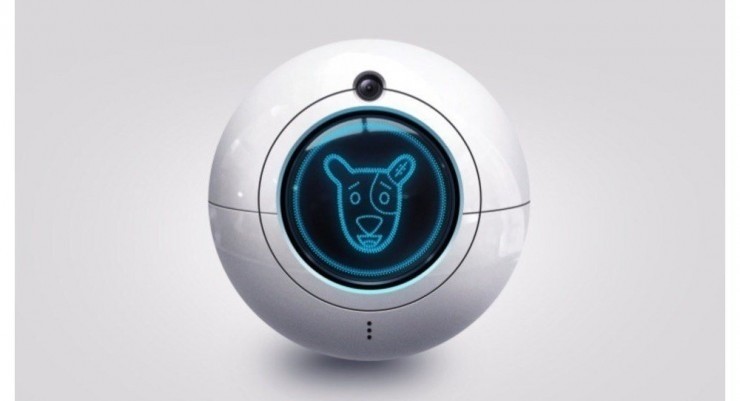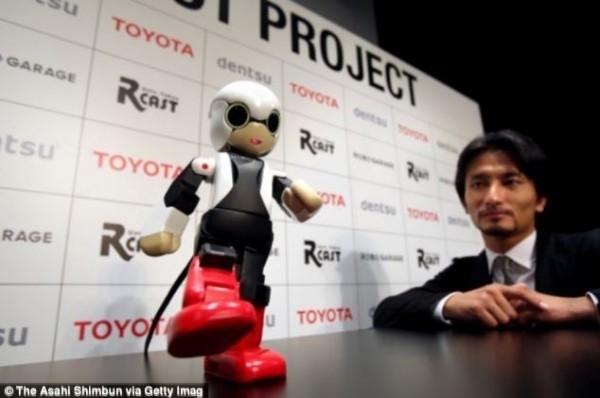(Original title: Robots of the International Space Station, only one-way tickets)

NASA JAXA recently installed a robot on the International Space Station. Its main role is to save astronauts' time.
The name of the robot is Int-Ball, a spherical robot with a camera. It can be controlled by the team on Earth, can fly in the space station (in the space station should not have to fly it ...), use a series of thrusters to move, and then record what happened in the space station.

Int-Ball is made entirely of 3D printing using existing drone technology. It looks like a beautiful blue eye floating. JAXA said that robots can move autonomously anytime, anywhere and can record images from any angle. It weighs 1kg, has a diameter of 15cm and has 12 propellers.
The Int-Ball was launched into space on the 3rd of this year by SpaceX's Falcon 9 rocket and is now in the Japanese experimental cabin of the space station.
JAXA estimates that astronauts spend about 10% of their time photographing the work they do and sending images back to Earth for analysis. With Int-Ball, astronauts have more time for experiments and space station maintenance.
Int-Ball is not the first robotic traveller of the space station. It would be better to say that there is a robot park.
Lei Fengwang reported that back in 2006, NASA NASA sent three small robots that could fly freely to the International Space Station. The robots named SPHERES have conducted 600 hours of experiments in space and carried out rich experiments including autonomous form flight, space station navigation, and map drawing, and even run programs written by middle school students in team games.

American astronaut Scott Kelly is working with SPHERES on the International Space Station
SPHERES need to always be under the supervision of astronauts (because they are more flammable, etc.), and rely on disposable alkaline batteries to power the CO2 push tank.
SPHERES later had successor Astrobee, a brand-new platform that could operate completely autonomously and safely on the International Space Station. The biggest improvement was the propulsion system. And it uses an electric propulsion system completely and can charge itself through the docking station.
Astrobee is also much more free and capable of autonomous navigation and movement in the US space, EU and Japan cabins of the International Space Station.

Spotty
In addition, in October last year, Lei Fengwang (public number: Lei Feng network) also reported that the Russian Federal Space Agency Roscosmos to join social media Vkontakte (Russia's Facebook), in March this year will be a small, exquisite and lovely space Robot Spotty is sent to the International Space Station.
Spotty is also spherical, it has a projection device installed on it, Vkontakte users can live through the software anytime, anywhere to understand what is happening on the International Space Station. In addition, Vkontakte users can also receive pictures and videos from the International Space Station and conduct intimate dialogues with astronauts.
The news at the time stated that Spotty would share a space capsule with Russian astronaut Fyodor Yurchikhin and send pictures and videos about outer space life from outer space to build a platform for Earth users to communicate with astronauts. However, Lei Feng.com found out that there are no news that Spotty is already in space.
There are many robots on the International Space Station.
In 2013, Toyota-developed robot Kirobo was sent to the International Space Station. Kirobo is a robot with a height of only 34 cm and a weight of only 1 kg. It is extremely flexible and has voice capabilities.

The robot can work safely without gravity and has facial recognition capabilities - it can even read human emotions and talk to astronauts.
Earlier in November 2010, a machine astronaut named Robonaut R2 took space on the US space shuttle Discovery and became the first robot to enter the International Space Station.

The R2 initially entered space only for more operational tests, but as the technology upgrades, it will eventually begin to perform its initial design missions—assisting the astronauts of the space station’s spacewalk for extravehicular operations, or replacing human completions such as space. Walking and other dangerous operations.
For the first three years of work in the space station, R2 was incomplete, with only the trunk, head and arms. Later in 2014, NASA sent it a pair of legs. Its height also increased from 1.3 meters to 2.5 meters. In this way, the more powerful R2 can better complete various routine and repetitive tasks in and around the space station, such as cleaning and grabbing items.
However, it is a one-way ticket for R2 to go into space. Once it enters the International Space Station, it will not return to the Earth during the “year of birthâ€.
 燑br>
燑br>
Roof or Ground PV Mounting Brackets
Types Of Mounting Bracket,Solar Ground Mounting System,Solar Panel Mount Bracket,Roof Solar Panel Bracket
NANTONG RONGCHANG IMPORT&EXPORT CO.,LTD , https://www.ergsolarcn.com